Spring 2008 in Southeast Ohio
This report covers roughly the first half of 2008, through late June.
We have been fortunate to have more rainfall than average this spring.
Here are some critters I've seen, in more-or-less chronological order.
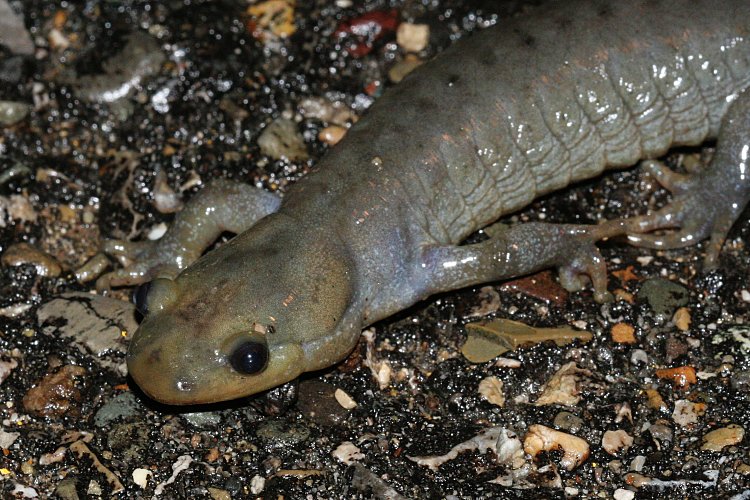
Jefferson's Salamander.
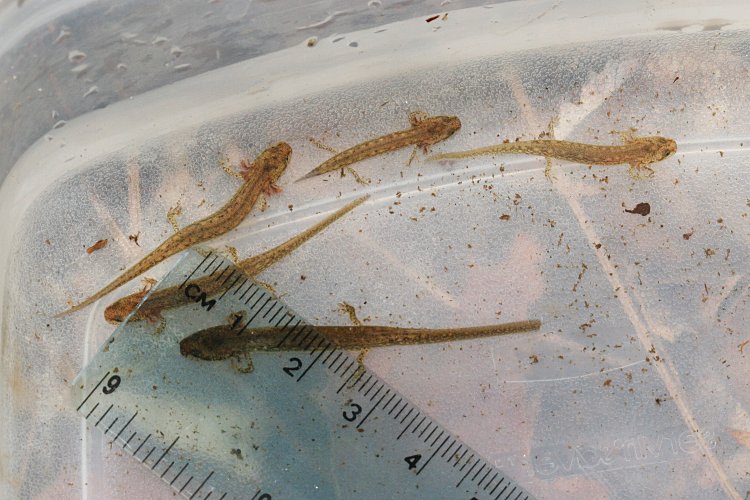
Two-lined Salamander larvae.
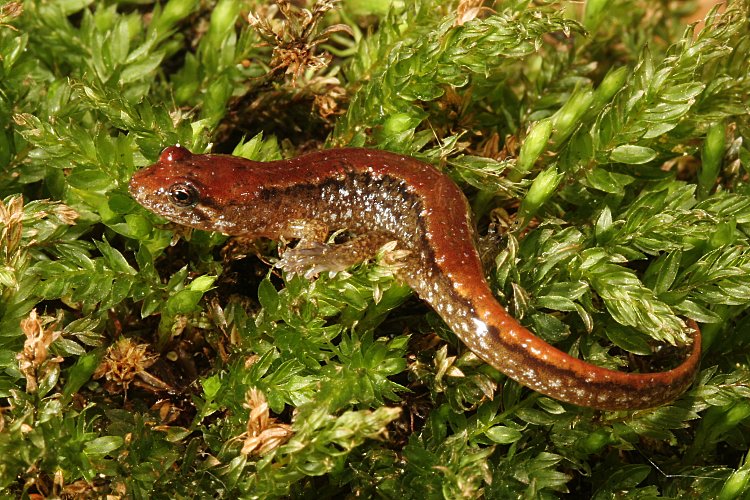
A pretty Dusky (Desgmognathus fuscus).
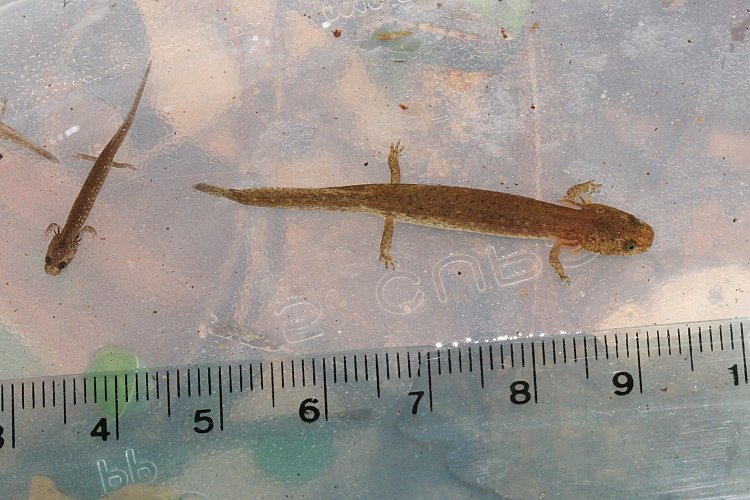
Pseudotriton larvae. With 20-20 hindsight, I now know that
the larger one is a mud salamander.
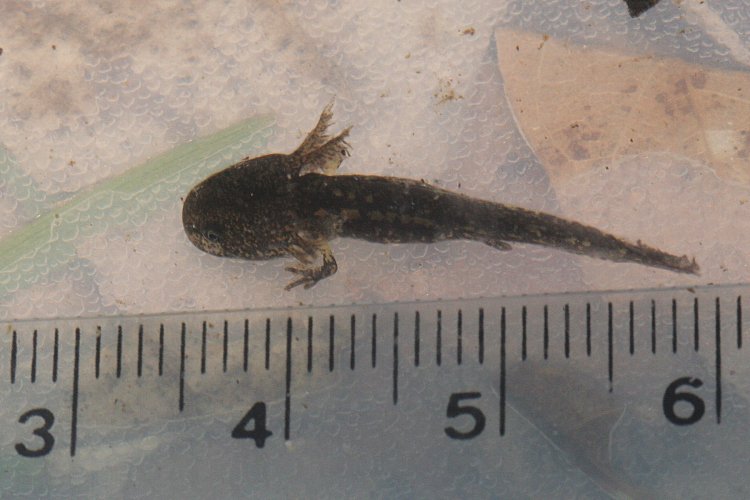
Marbled Salamander larva.
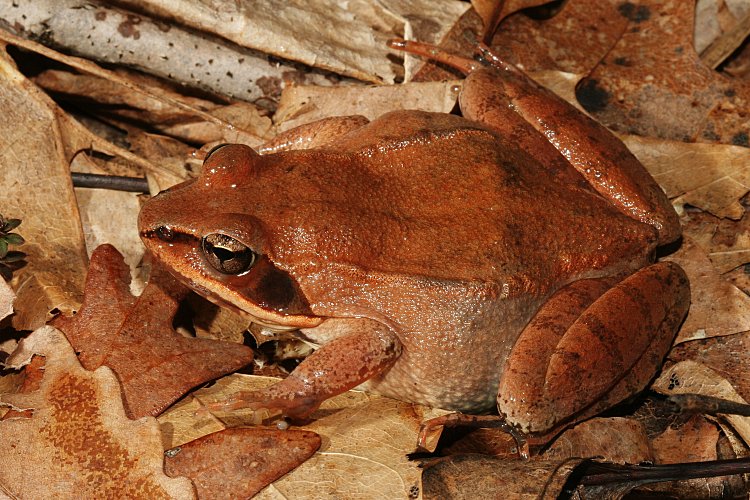
Wood Frog.
One night in mid March we had some really nice rains. Many animals
were seen:
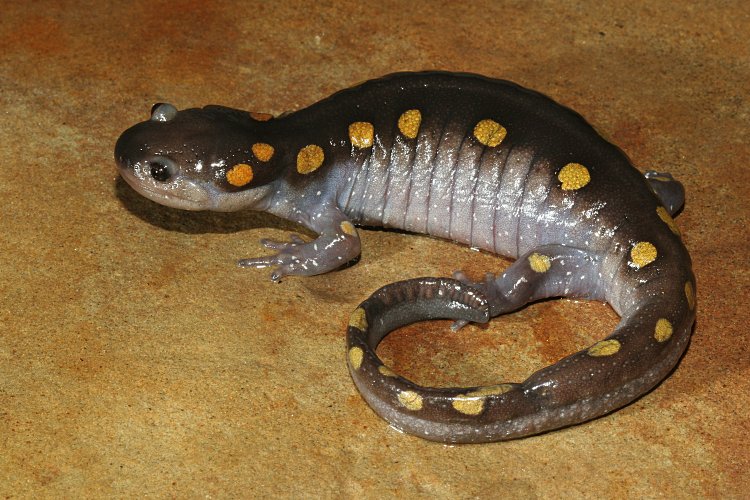
Spotted Salamander. The spotteds in SE Ohio don't seem to ever have
the orange spots on their neck. This animal is showing a hint of it though.
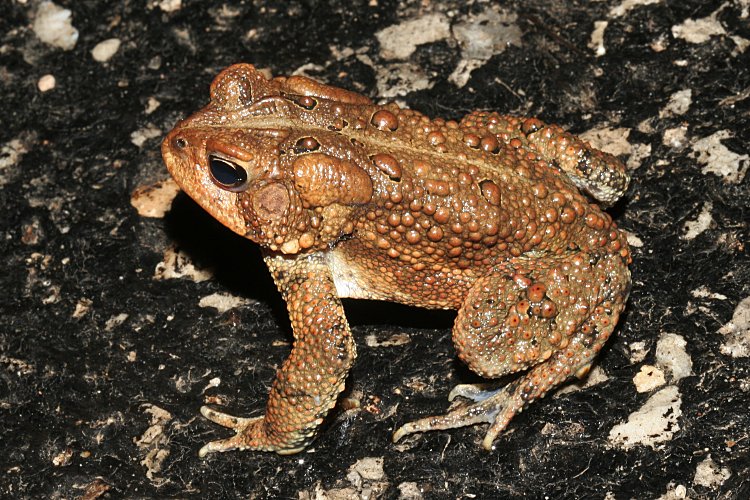
American Toad.
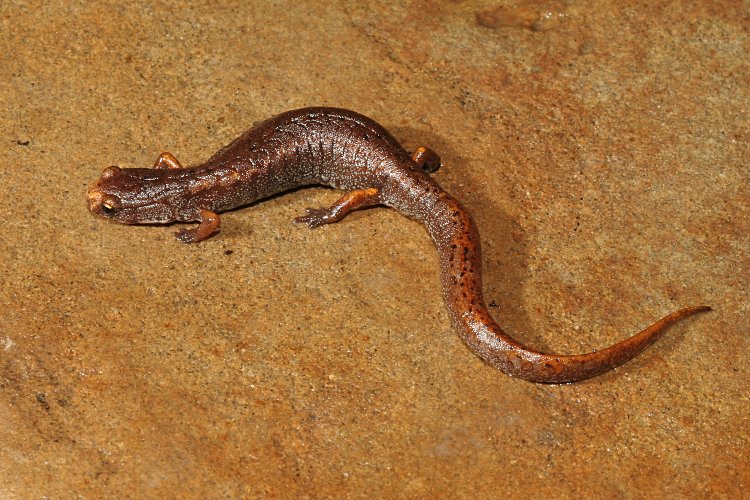
Four-toed Salamander. Not a great photo, but this is the only one I've
ever road cruised.
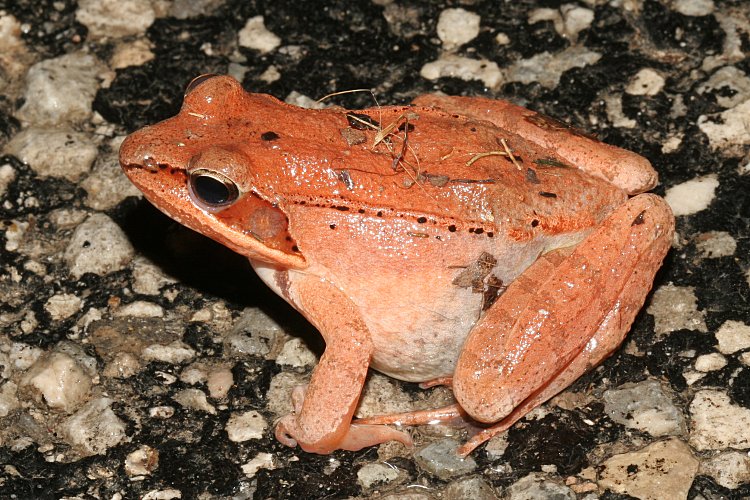
Wood Frog, whorehouse phase.
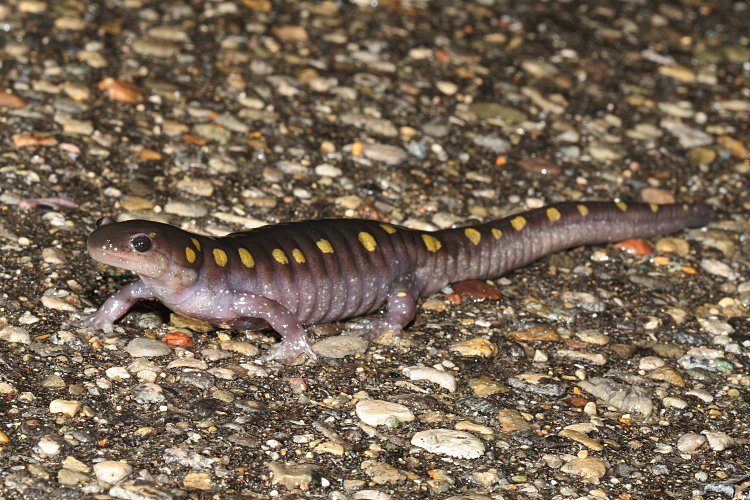
Spotted Salamander.
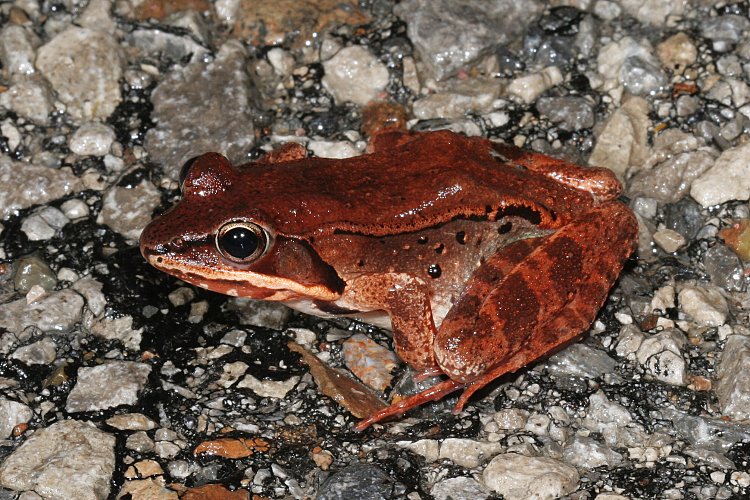
Wood Frog.
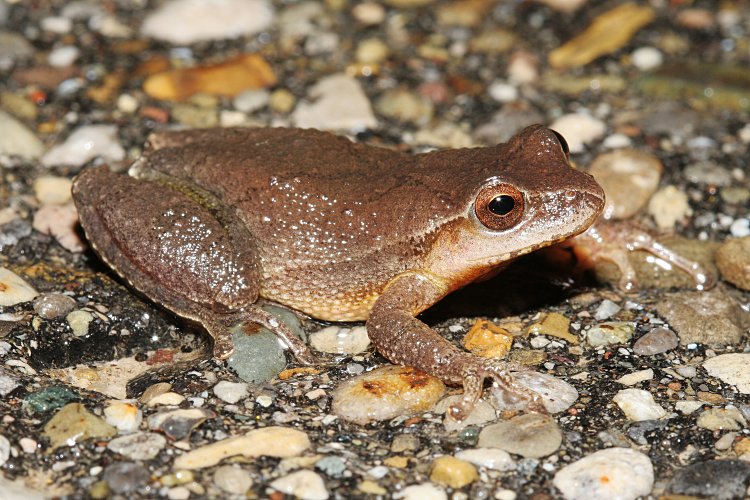
Peeper.
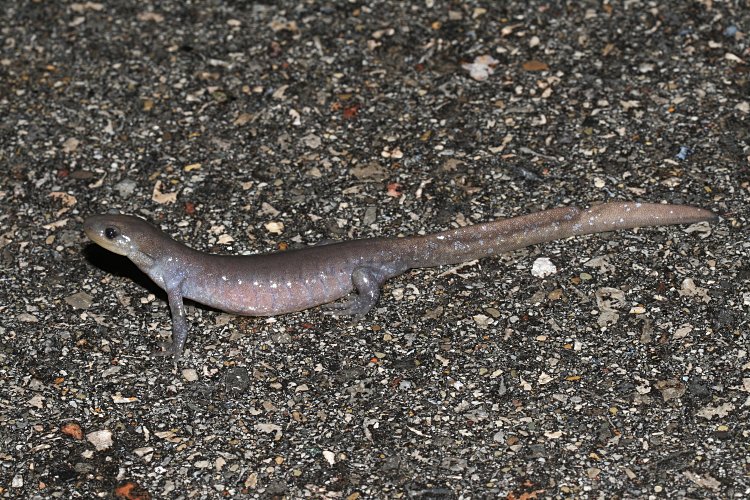
Jefferson's Salamander.
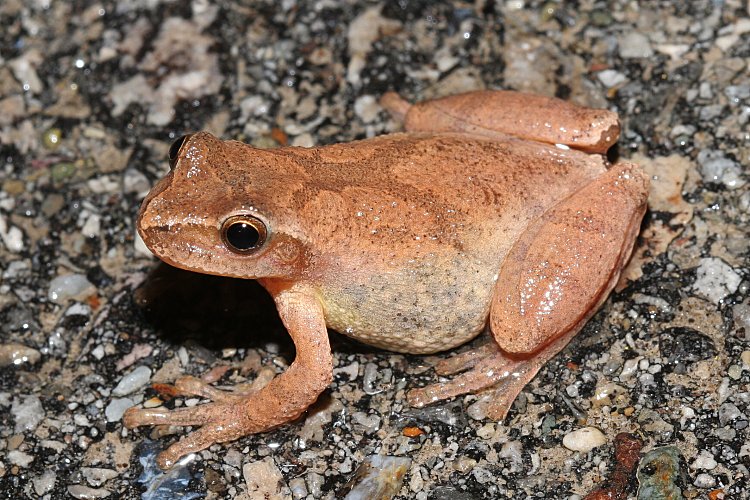
Peeper.
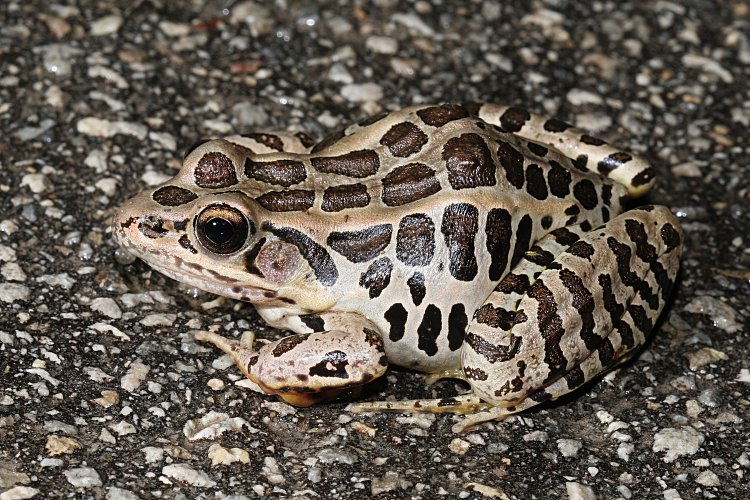
Pickerel Frog.
I wound up documenting 42 amphibians that night, the above were a
few of the highlights.
On 21 March 2008 I found a Four-toed Salamander in the process of laying
its eggs. That's the earliest I've seen this activity in Ohio.
Here's a freshly laid egg:
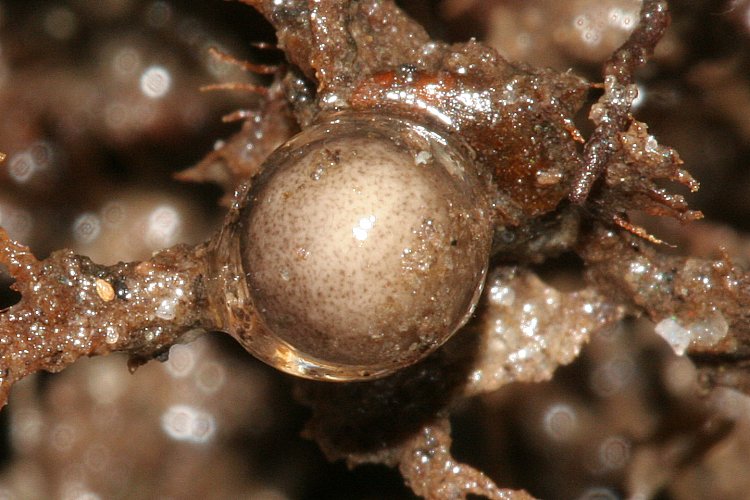
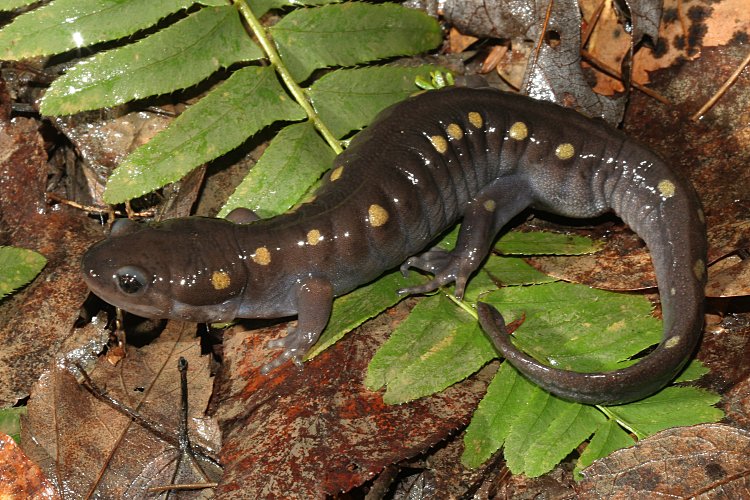
A Spotted Salamander found under a log adjacent to a vernal pool.
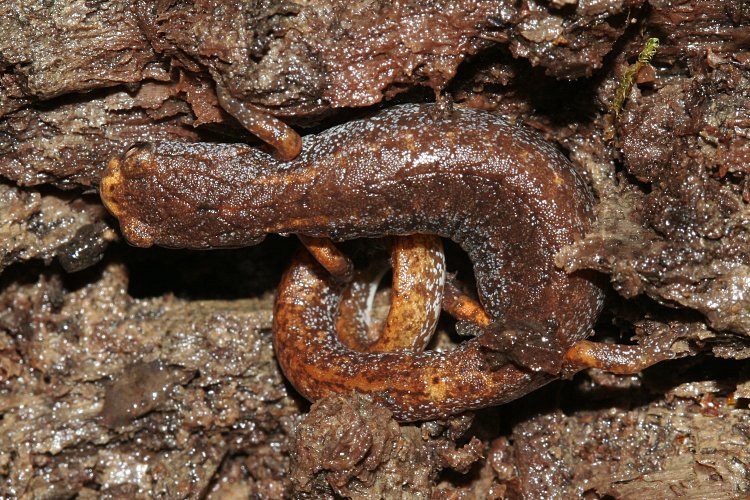
A Four-toed Salamander, as found under some moss on a log. It had
not laid eggs yet (27 March 2008).
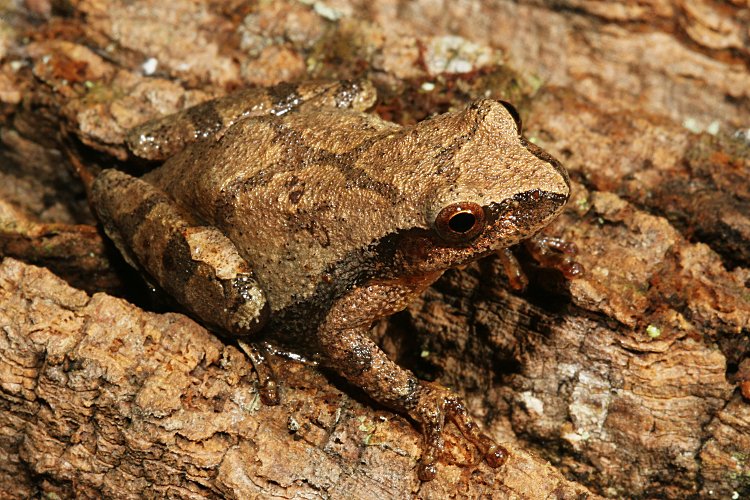
Peeper.
At one point this spring, Jason Folt flipped a log which had three
salamanders under it. Here they are, obviously not in situ...
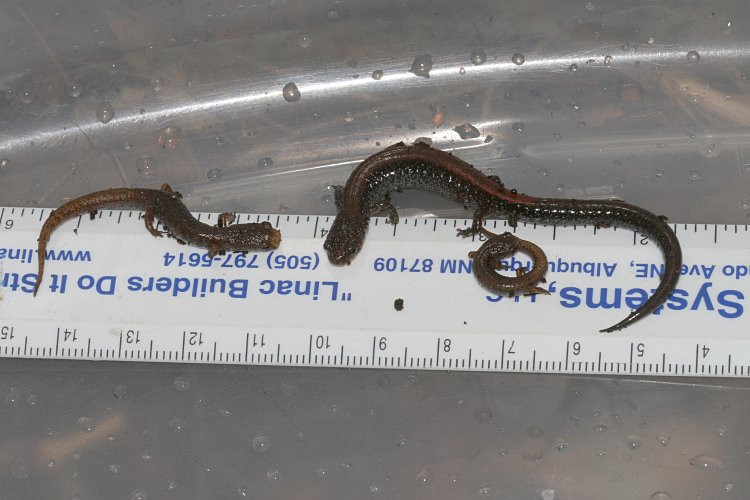
A redback and two four-toeds. Not bad. The juvenile Four-toed Salamander
was the first I'd ever seen, so I will include a couple more pics of it.
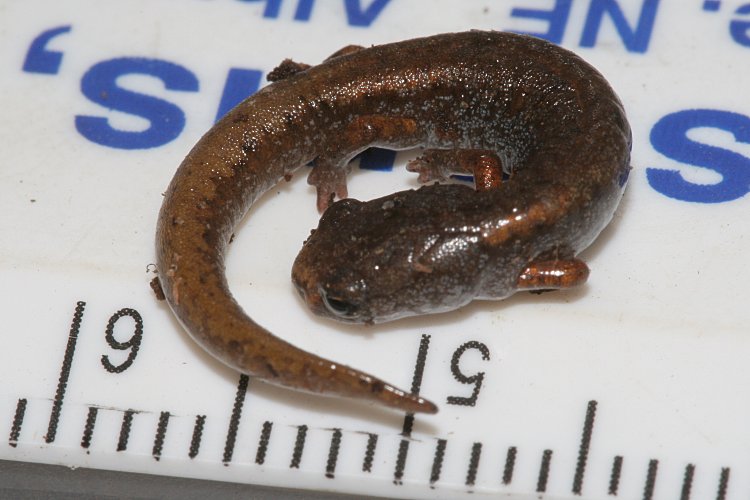
Juvenile Four-toed Salamander.
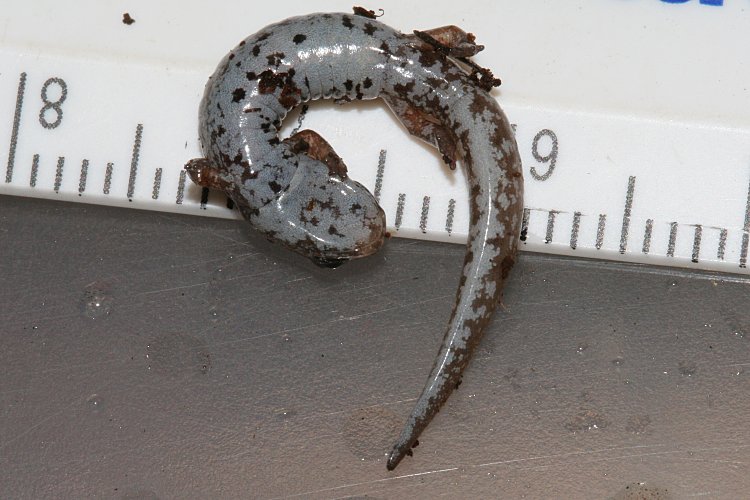
Juvenile Four-toed Salamander.
The same day, we found this Pseudotriton larva:
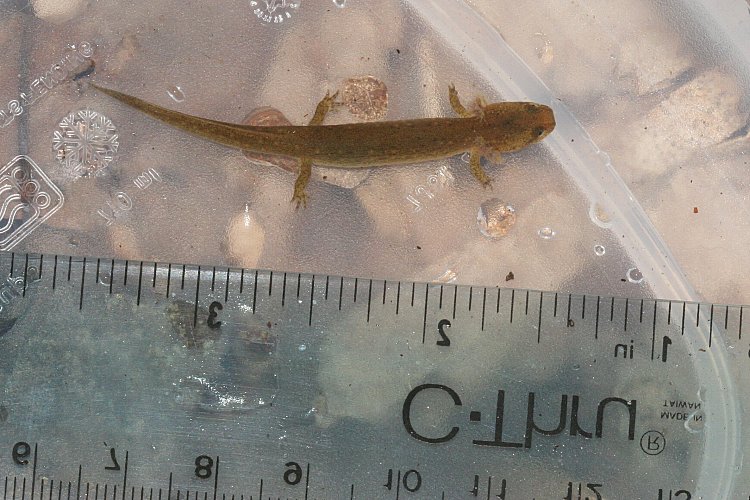
Again, with 20-20 hindsight, I can say definitively that it is a
Mud Salamander.
Later that same day, I personally acquired some data that I would have
rather avoided:
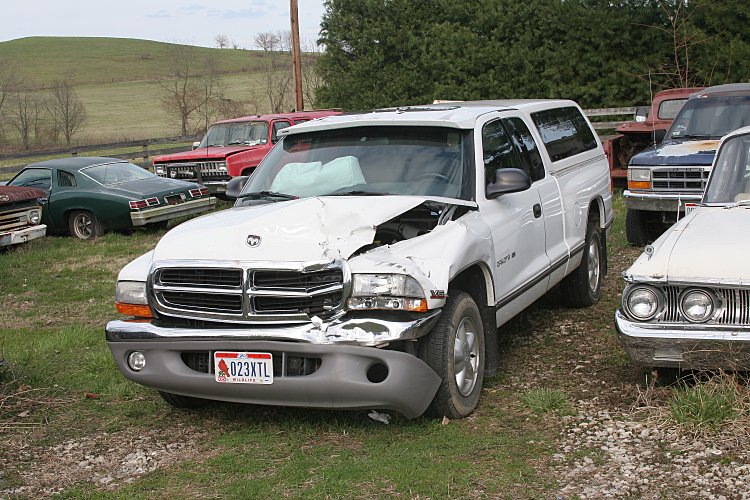
Anecdotal evidence for the greatest danger faced by the field herper:
getting to and from the field...
A careless driver pulled out right in front of me while I was driving
down the highway... Airbags are my new best friend.
The photo shows my truck a few days later, in the yard it was
towed to (in these parts, the wrecking yard really is somebody's yard).
It was declared a total loss, so now I'm in the market for a new vehicle.
Fortunately, nobody was injured significantly. The above Pseudotriton
larva which I had collected also survived... I was also lucky to
have Jason Folt following behind me so I had a ride home.
Jason and I woke up early the next morning to go meet Joe (salamanderhunter)
and another friend in the field. My neck and shoulders were feeling a bit
creaky. Early on, we noticed this situation:
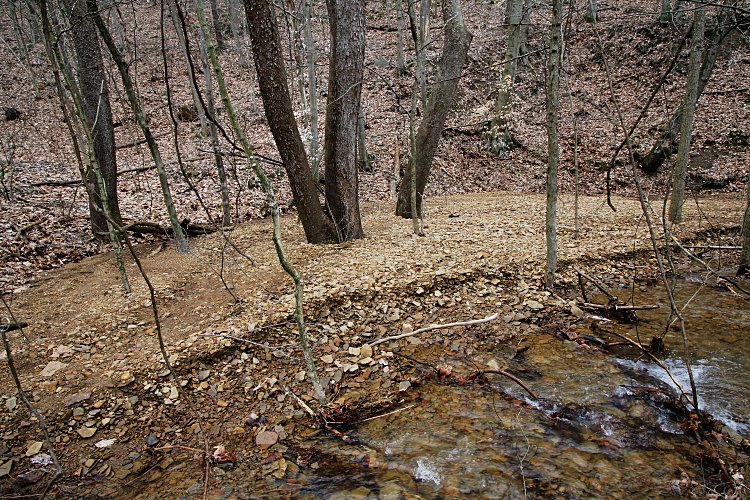
This locality used to be a nice mossy/mucky oxbow seepage area. Andy Avram
and I found an adult Red Salamander here a few years ago.
Now the area is covered in about two feet of fresh sand and cobble, no
doubt the result of heavy rains earlier in the spring.
Hopefully, Mother Nature plays a zero-sum game.
My aches and pains went away when Jason turned this up:
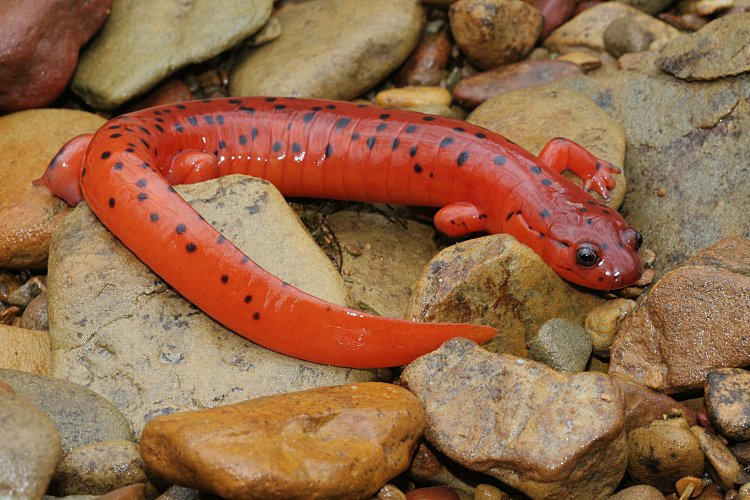
A Mud Salamander, from a new locality.
A little while later we found these:
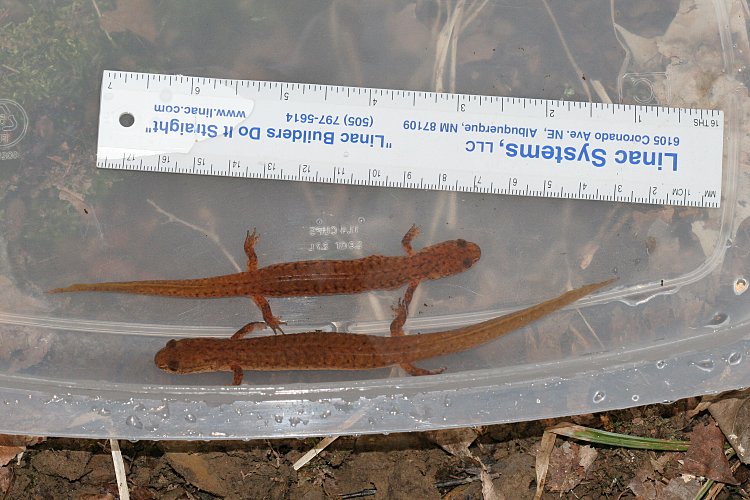
A pair of young adult Northern Spring Salamanders (G. p. p.).
Later in the day, Joe and I turned up some more Spring Salamanders.
Here's one:
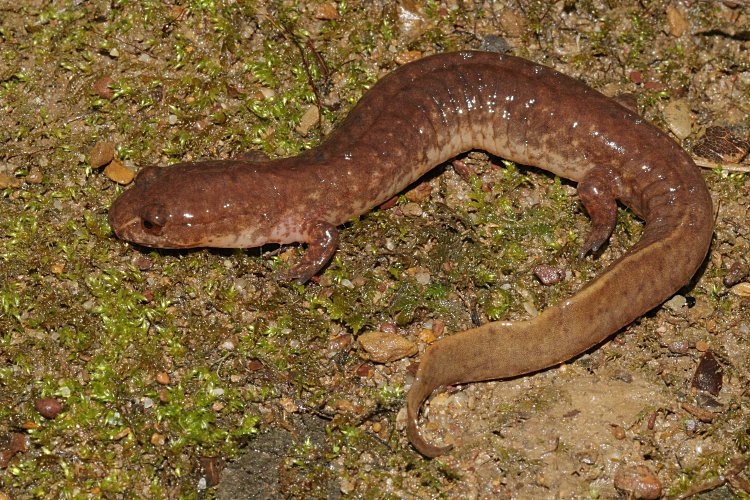
Northern Spring Salamander (G. p. p.).
The Spring Salamanders from this area tend to be pretty ugly...
I was lured over to the Dark Side (west of the Scioto River)
twice this season. Here's a few finds from that area:
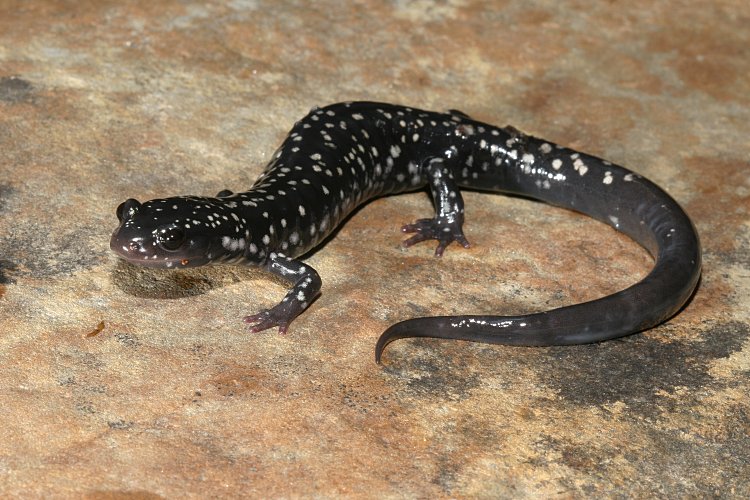
Slimy Salamander.
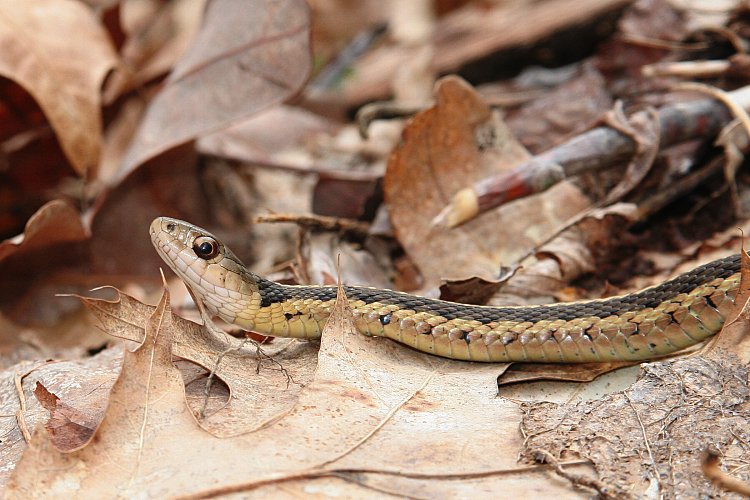
Eastern Garter, in situ.
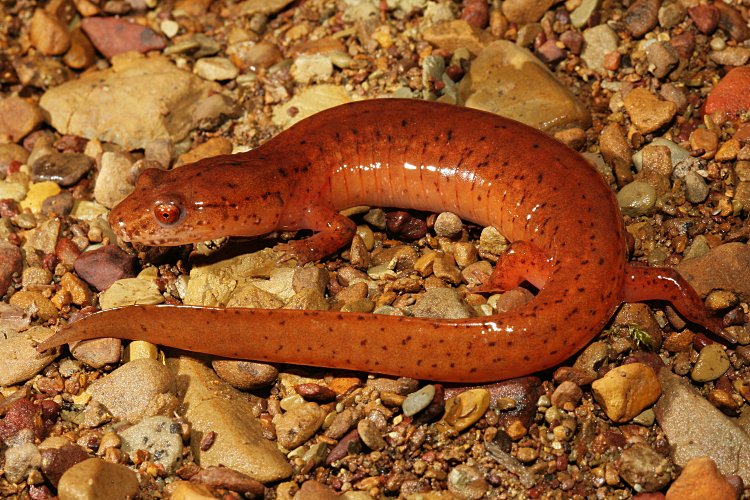
Kentucky Spring Salamander (G. p. duryi).
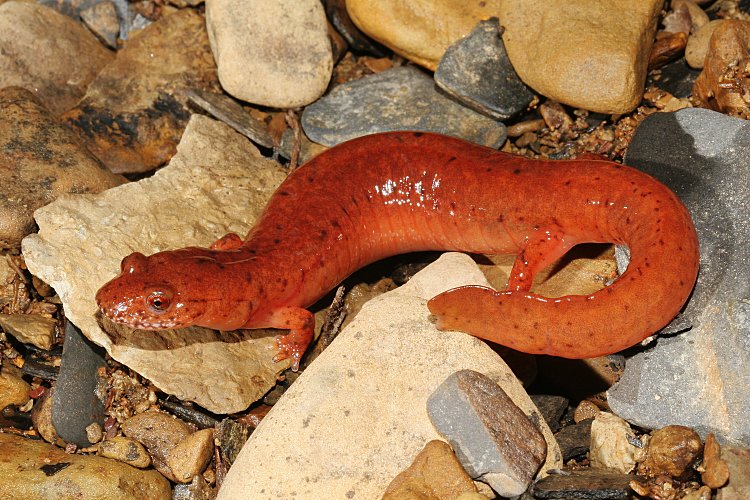
A large Kentucky Spring Salamander (G. p. duryi).
This one looked a bit like a mud salamander at first glance.
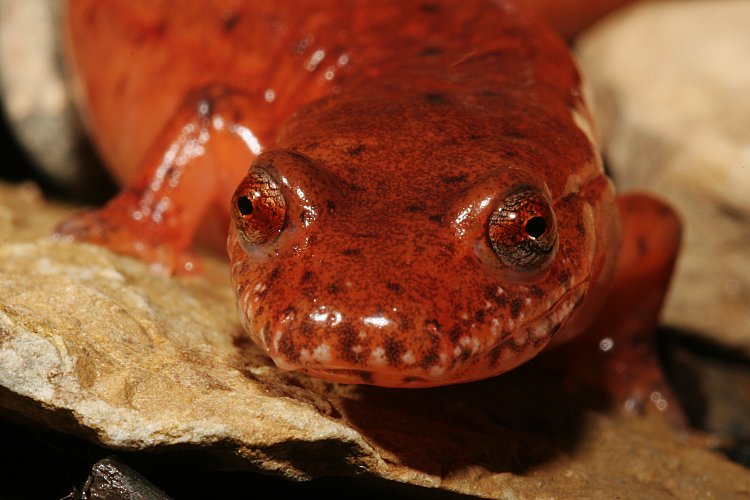
Another look at the above animal.
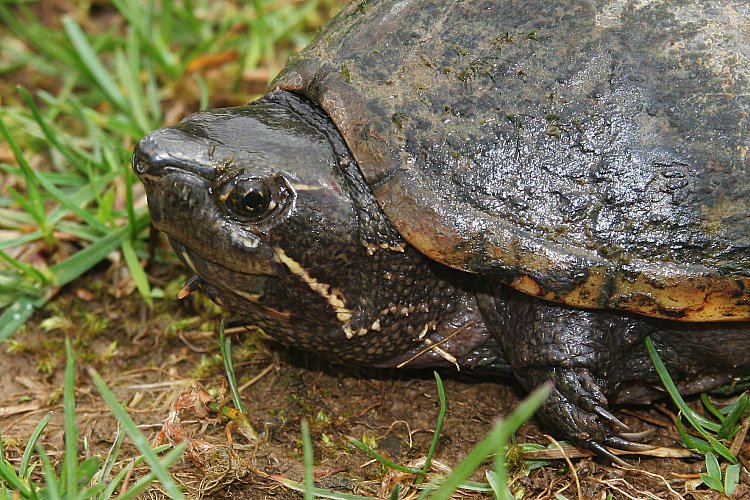
Stinkpot.
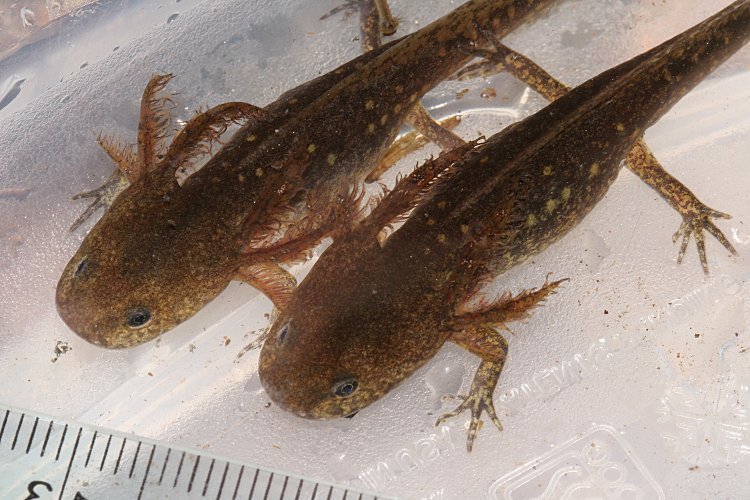
Marbled Salamander larvae.
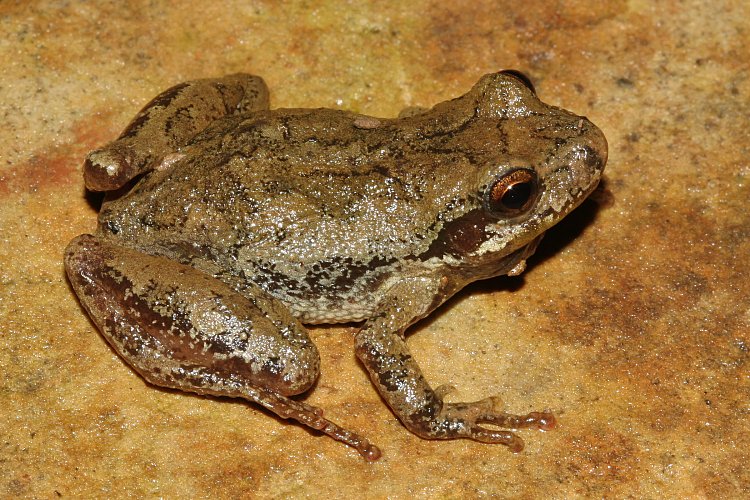
Mountain Chorus Frog.
The following is one of the better finds I witnessed this season.
As is the case in many states, the known distribution of the
Four-toed Salamander is is rather spotty in Ohio.
A group of us were searching in one of the gaps in its range, looking for other
creatures on our agenda. When I flipped a rock on the side of the trail, it
took my mind a couple of seconds to digest what I was seeing:
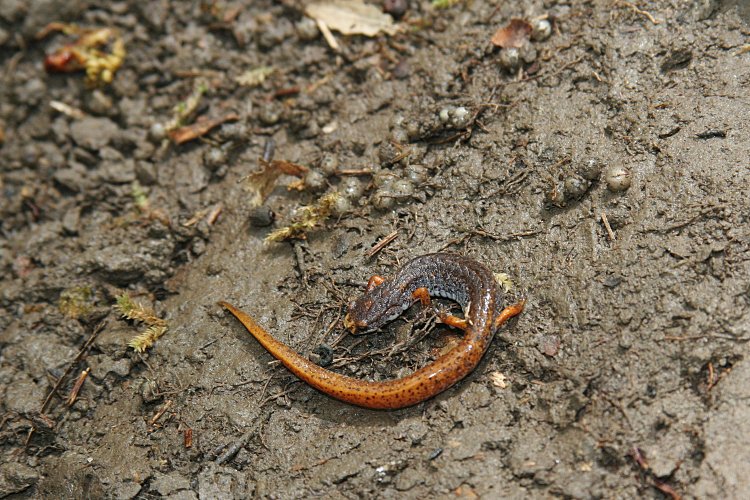
A Four-toed Salamander with eggs? Here? Under a rock?
Well, obviously YES.
There was a little bit of water in the trail ruts about two feet away.
This photo, and the one below, are in situ.
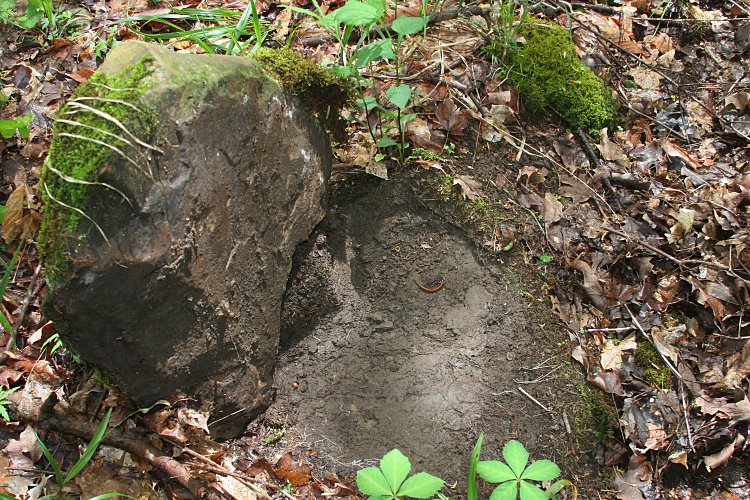
Another look at the Four-toed Salamander situation.
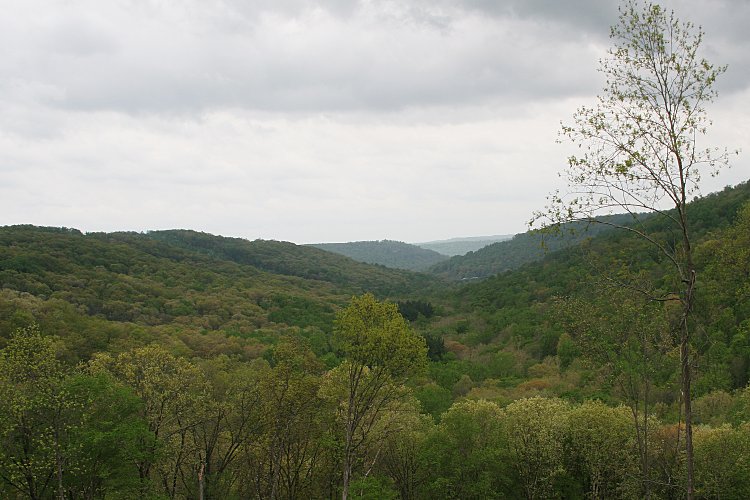
Scenery.
That's it for the Dark Side. The rest of the pics are from southeast Ohio.
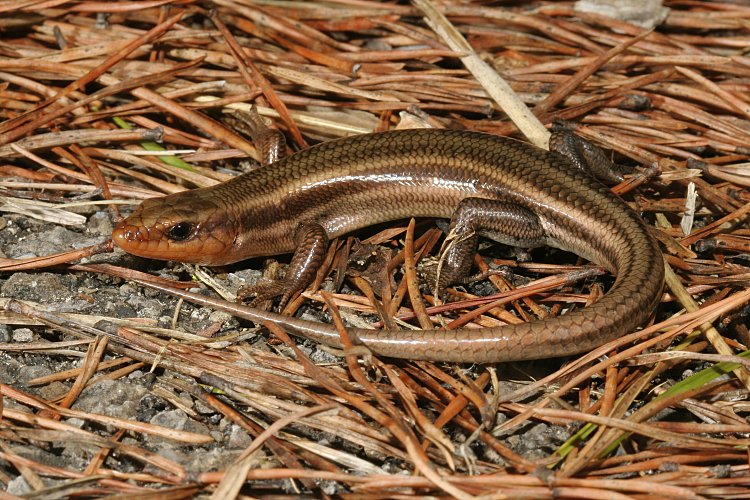
Five-lined Skink.
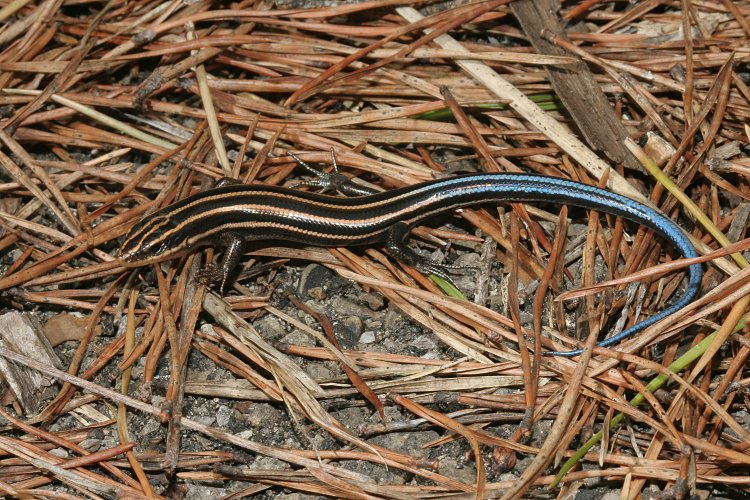
Juvenile Five-lined Skink.
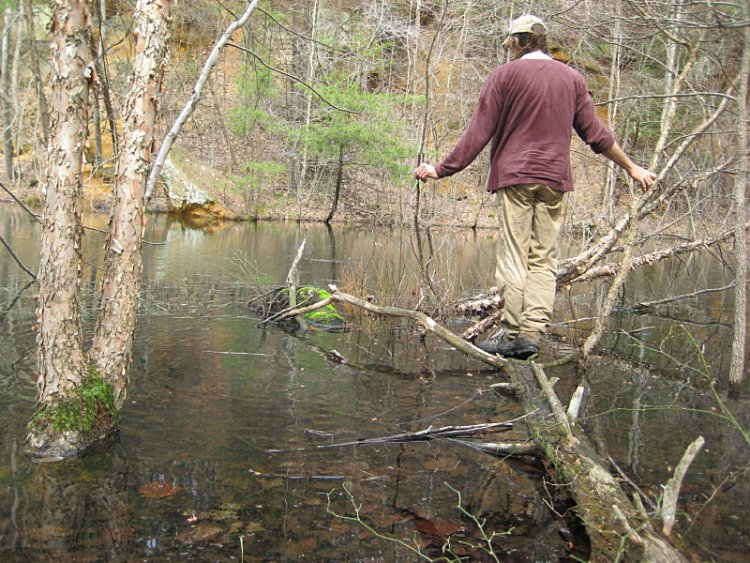
Yours truly, doing his best Mary Lou Retton impersonation.
There was some interesting looking moss out at the end this log,
and I was challenged to investigate. No Four-toed Salamanders were
found, but I did stay dry! I hope I never outgrow stuff like this!
This site is actually pretty interesting. It's an abandoned coal mine,
near the ridgetop. Surprisingly, it contains an excellent diversity
of amphibians, including : Spotted Salamanders, Four-toed Salamanders,
Dusky Salamanders, Two-lined Salamanders, Newts, Wood Frogs,
Green Frogs, Bull Frogs, and Spring Peepers.
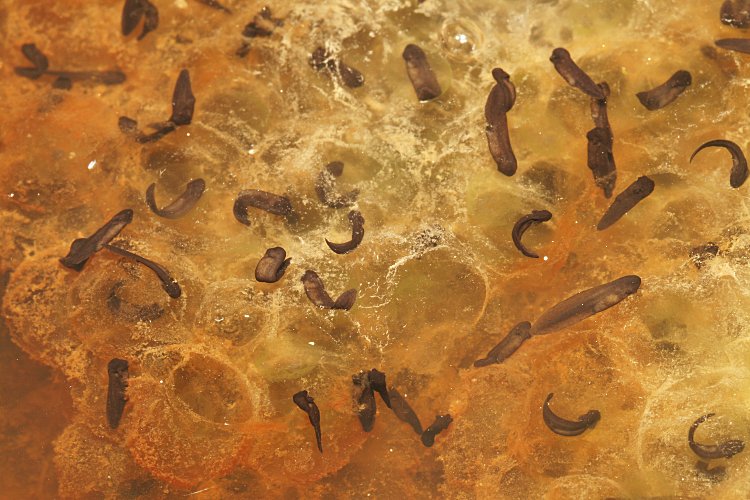
Hatching Ambystoma eggs (12 April 2008).
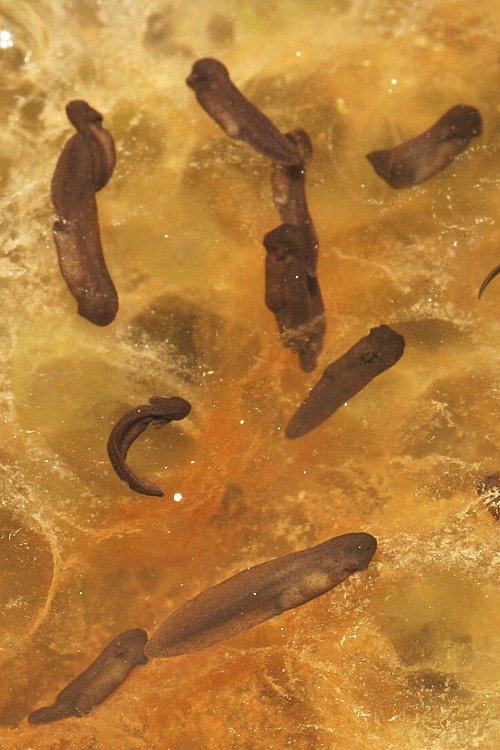
Another look.

Weak attempt at Four-toed Salamander and habitat shot.
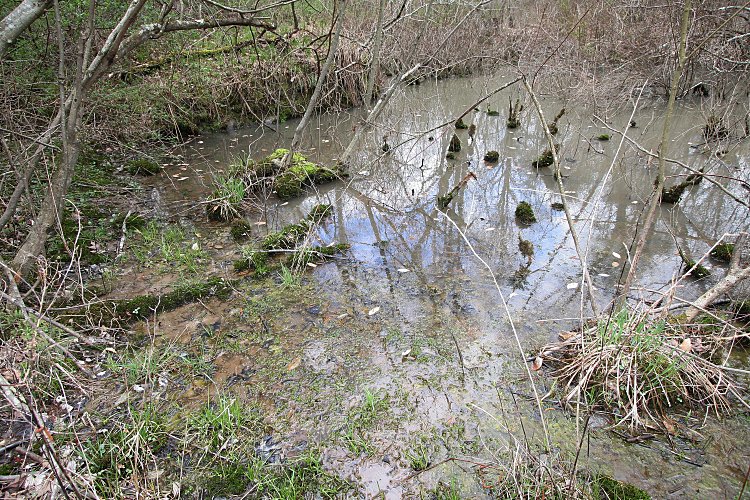
Here's a better look at the habitat where the above Four-toed Salamander
was found. It's interesting because the whole area was recently
flooded by the high waters of a fairly large stream (that's why the
water is murky).
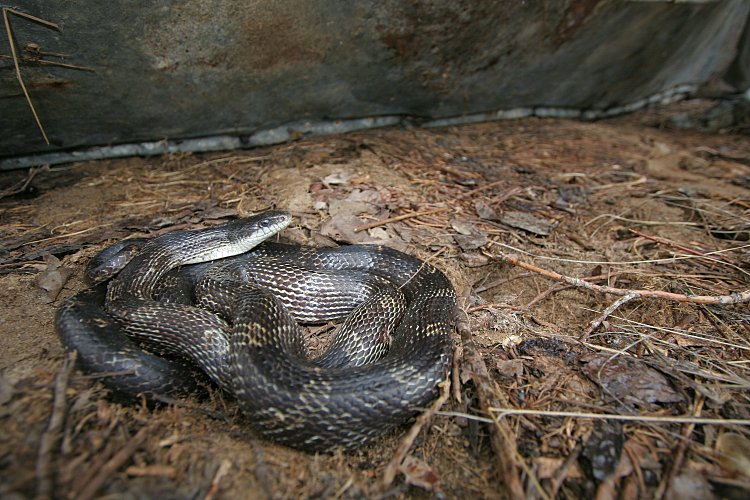
Black Rat Snake, as found under tin.
My wife spotted this just off the trail, right after I had walked
past it...
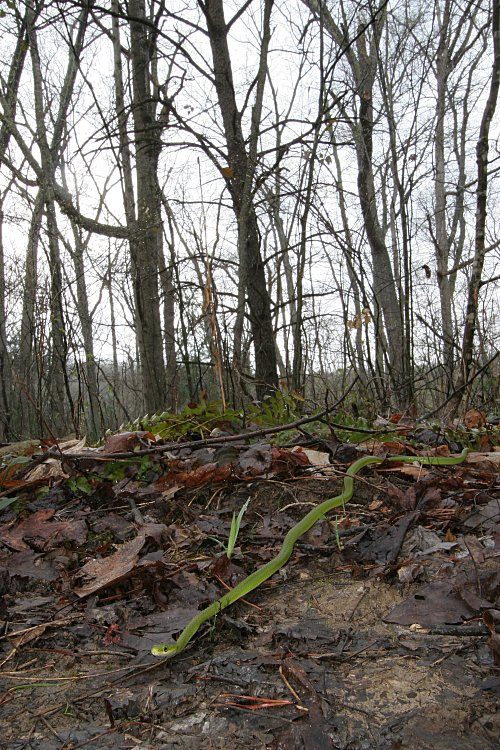
Rough Green Snake, in situ.
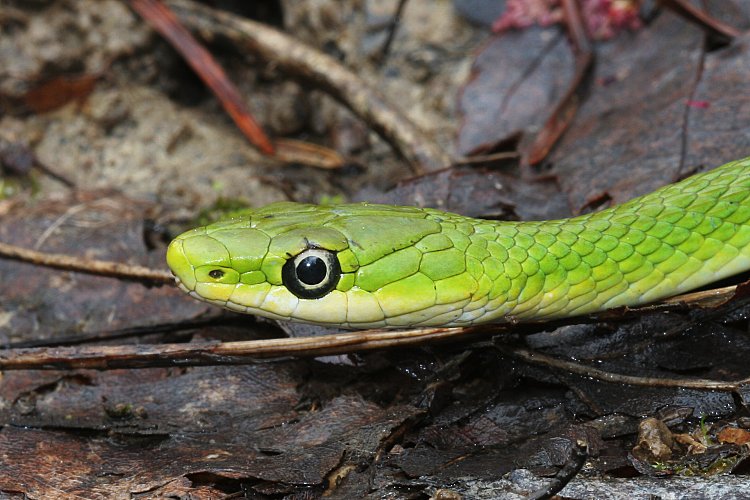
Another look.

Four-toed Salamander.
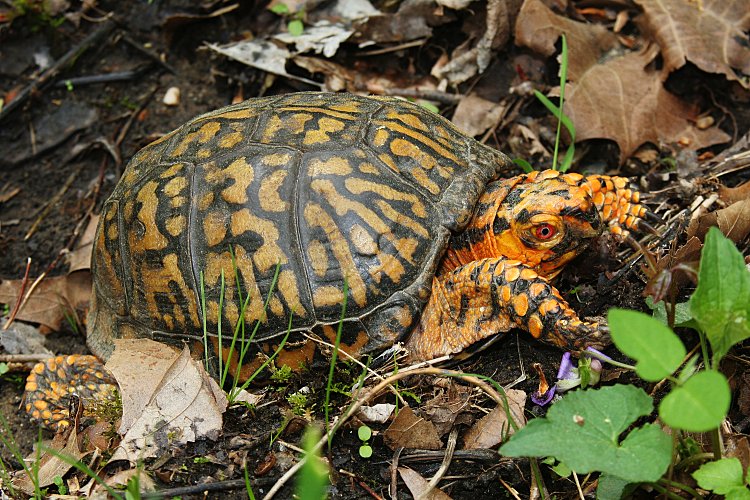
An attractive Box Turtle, in situ.
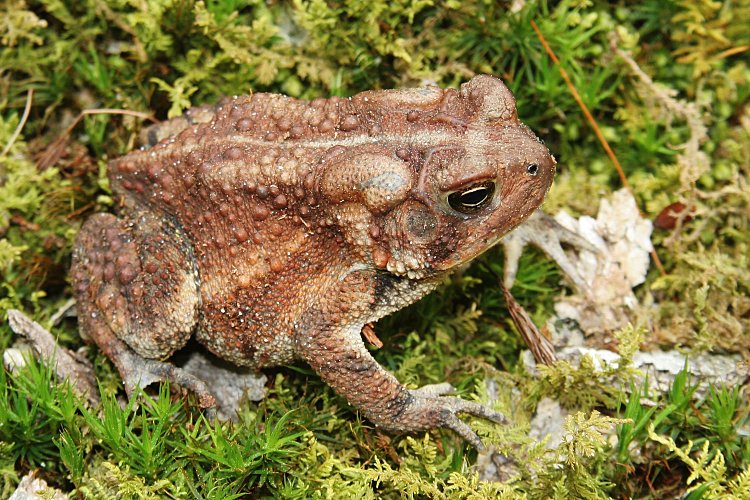
American Toad.
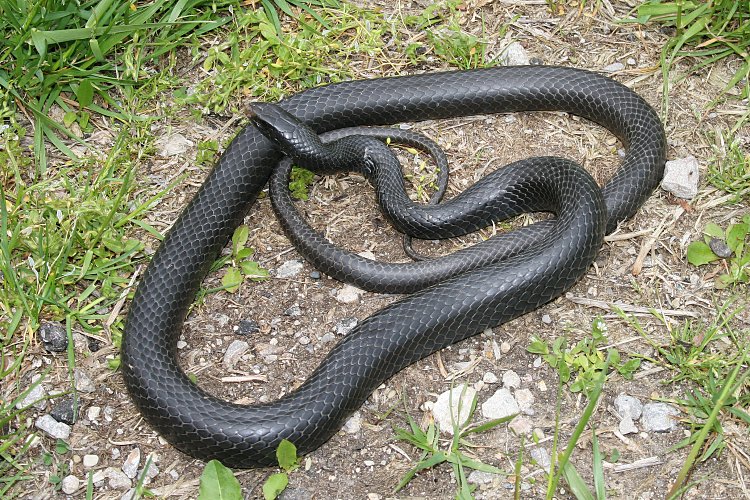
Black Racer.
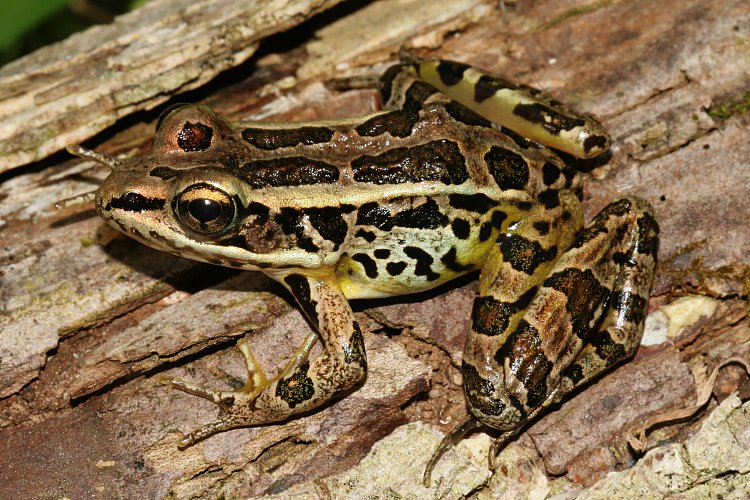
Pickerel Frog.
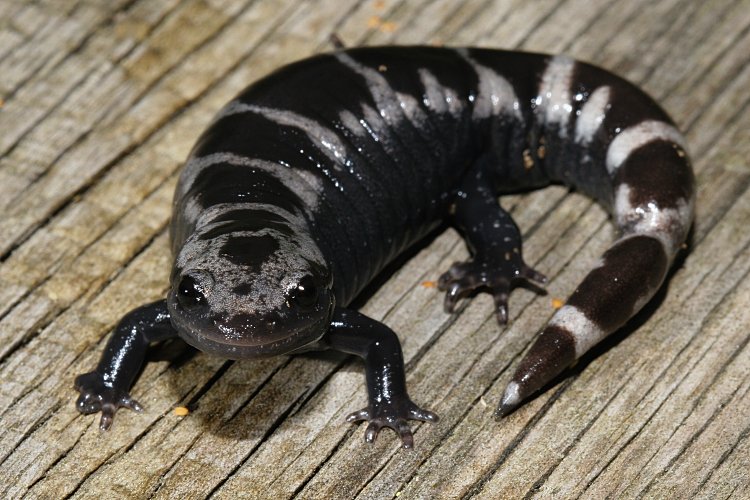
Marbled Salamander.
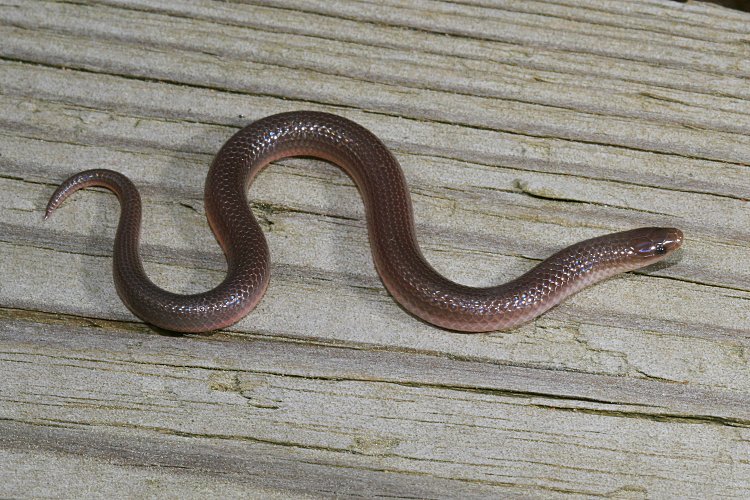
A young Worm Snake.
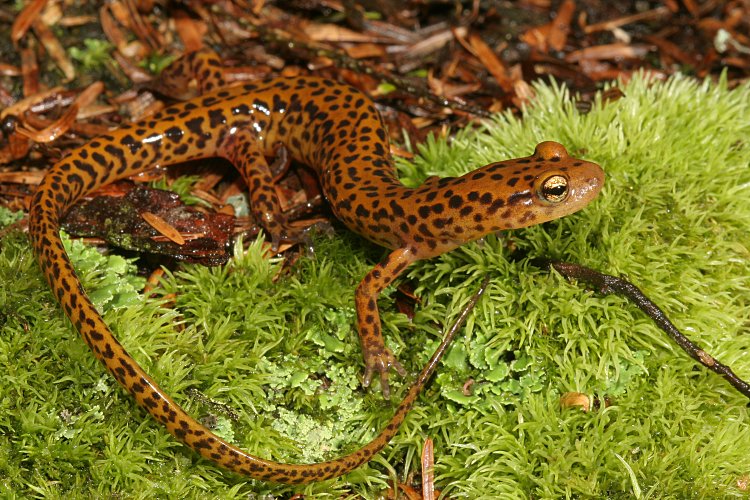
Long-tailed Salamander.
The next three snakes were found with Jason Folt's brother Brian:
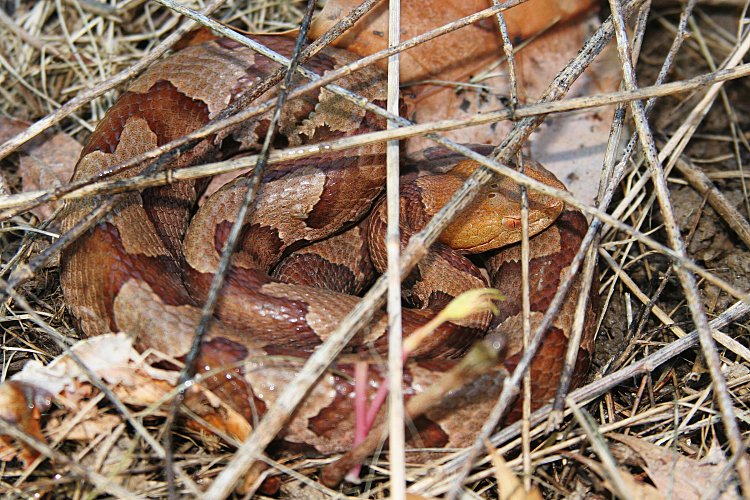
Copperhead, as found under tin.
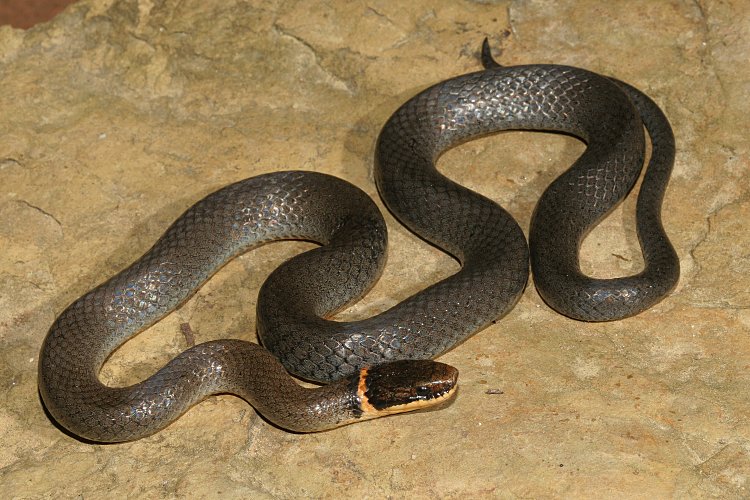
This ringneck measured 17 inches TL, I believe this is the largest I've
ever seen.
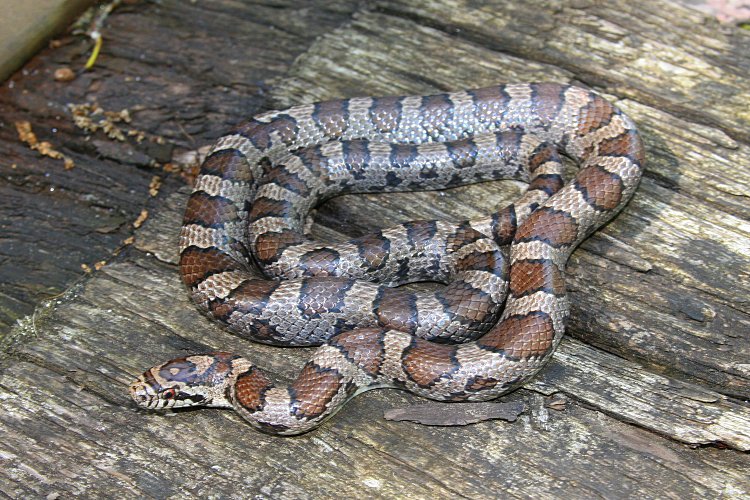
Milk Snake.
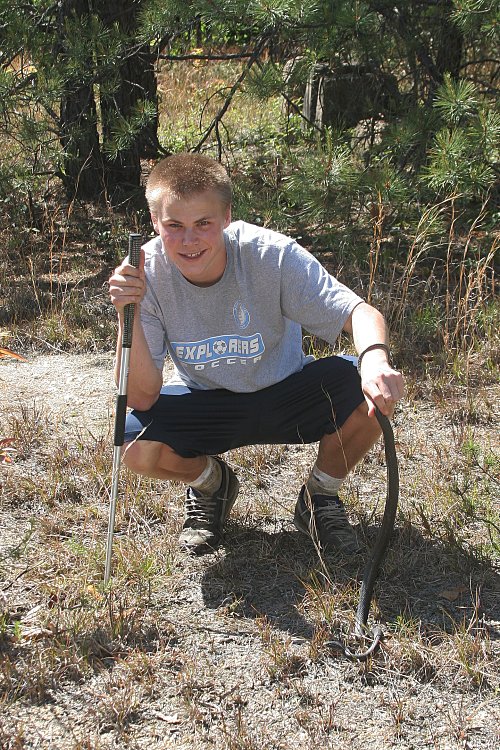
Brian Folt, Snakemaster!

Black Rat Snake.
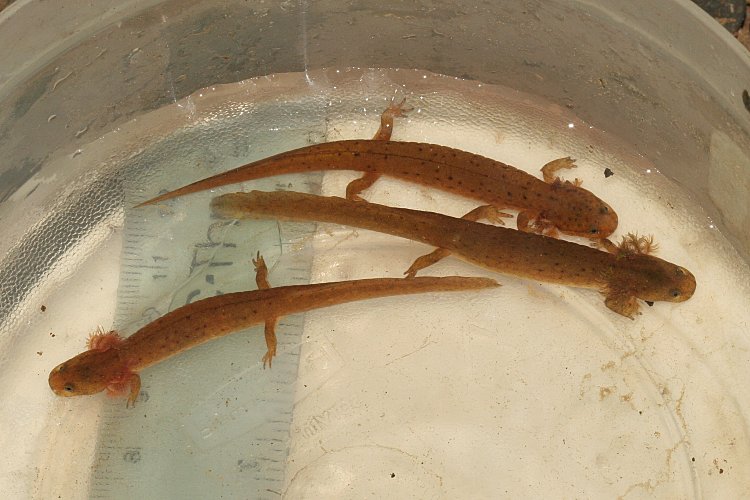
Mud Salamander larvae.
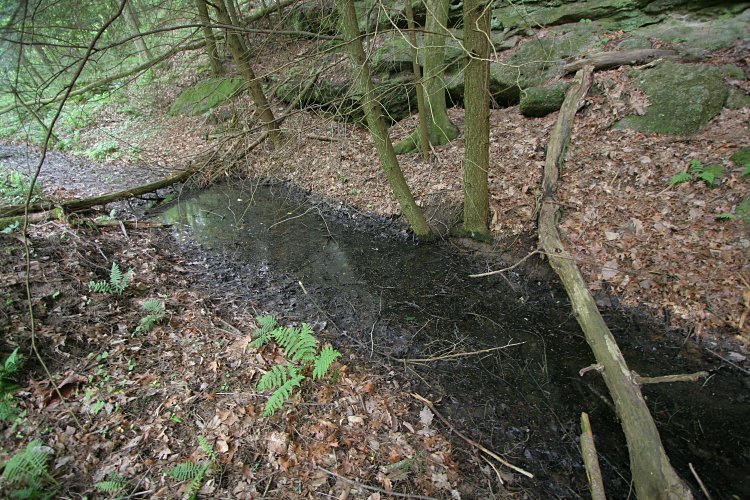
Habitat where the above Mud Salamander larvae were found.
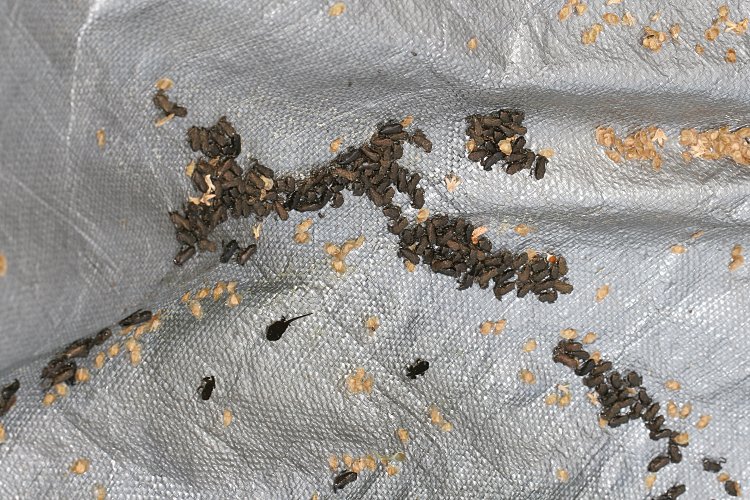
American Toadlets, in our backyard (1 June 2008). The tadpoles grew in the
water that had collected on top of the tarp which covers our swimming
pool. This scene was repeated all around the edge of the pool.
I figure our pool contributed a couple of thousand young
toads to the world this season.
After they transformed, they hung around the edge of the water for a couple
of days, then they all dispersed when we had a big rainstorm.
Now our pool is in use by humans; the Gray Treefrogs are out of luck...
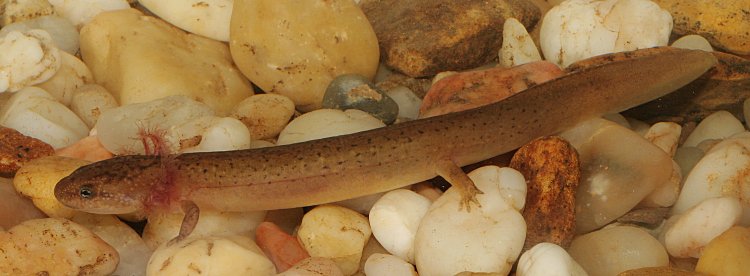
Red Salamander larva.
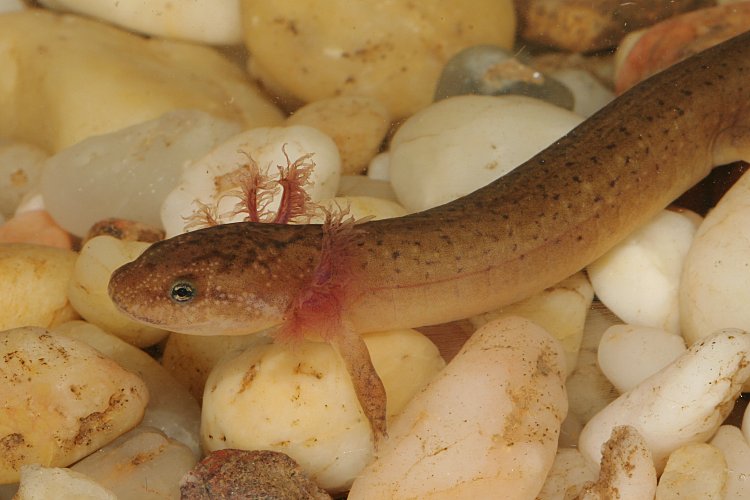
Closer look at the above larva.
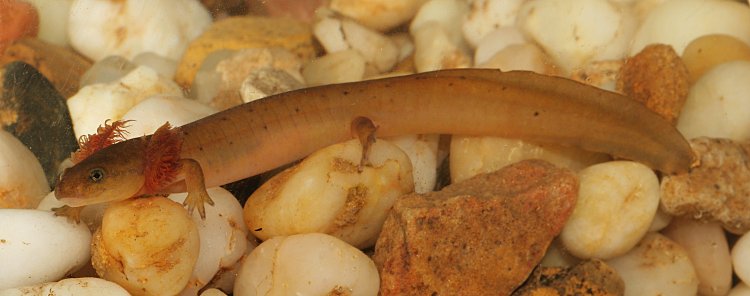
Mud Salamander larva.
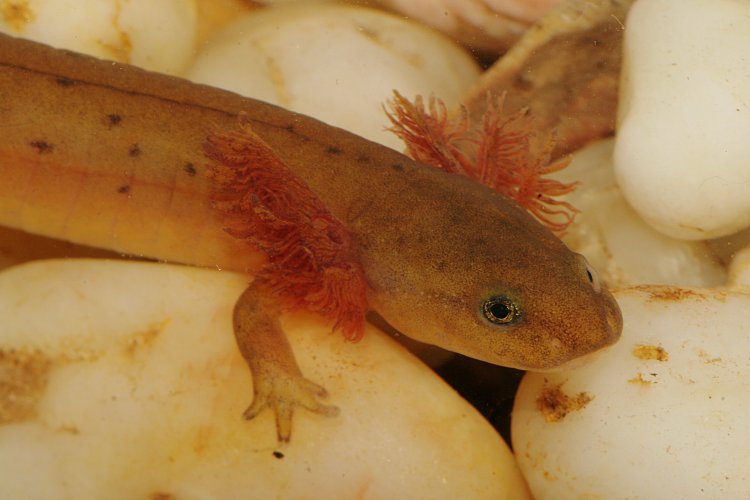
Closer look at the above larva.

An attractive Northern Spring Salamander (G. p. p.).
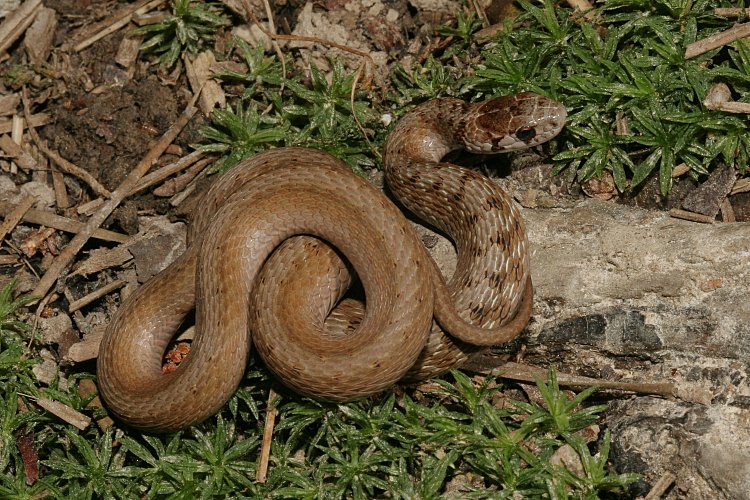
Dekay's Snake.
I didn't have much luck this spring with the adult Mud Salamanders.
I was thinking the one above was going to be it.
I did see one other adult Pseudotriton which was under a log, but
before I could secure it, it was gone daddy gone down a hole.
I'm pretty sure it was a Mud Salamander.
But it isn't over 'til it's over, I luckily turned this one up
one 20 June 2008:
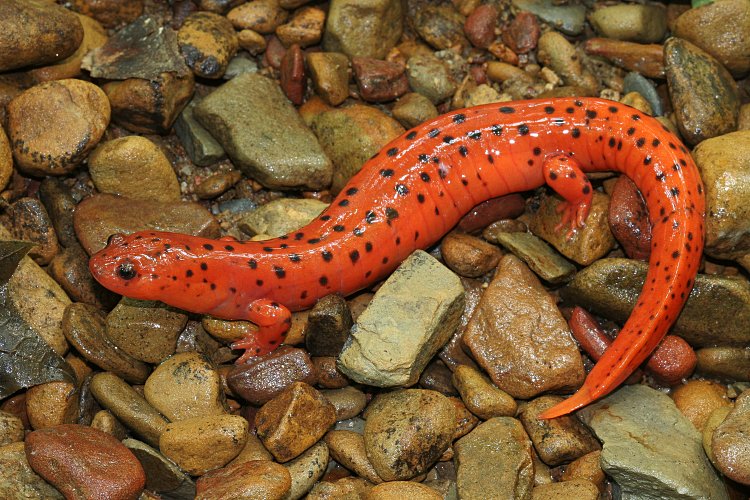
Mud Salamander. This is the largest one I've ever seen, it measured
164 mm TL and 101 mm SVL (to posterior end of vent).
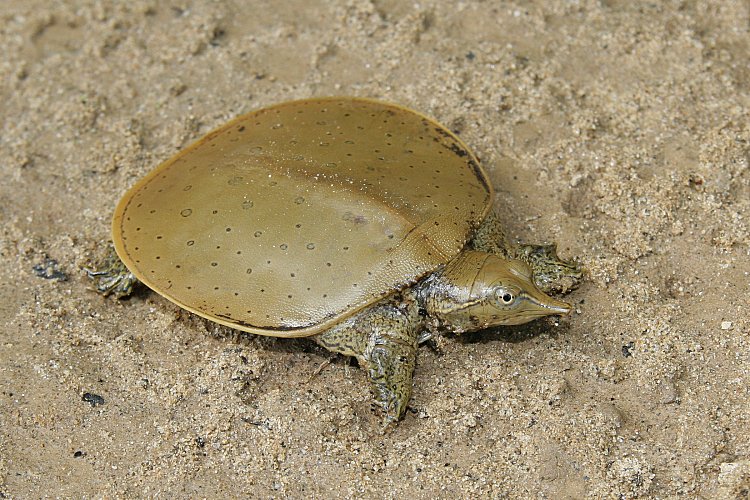
Juvenile Spiny Softshell. This is actually the first one of these I've
ever photographed. Searching for them was fun.
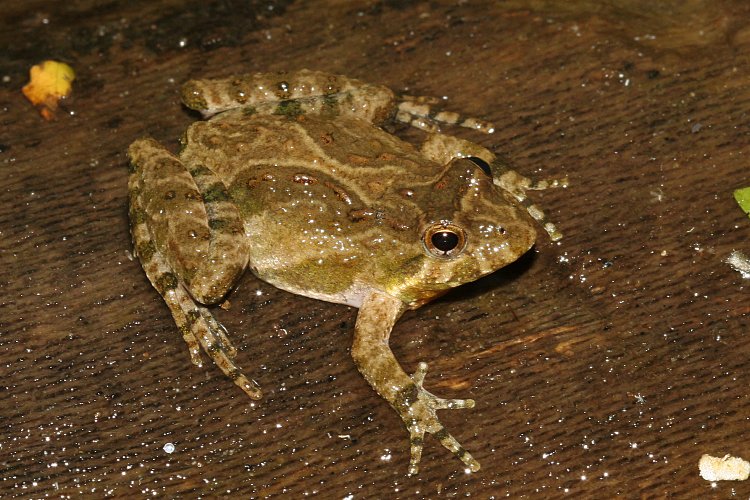
Cricket Frog.
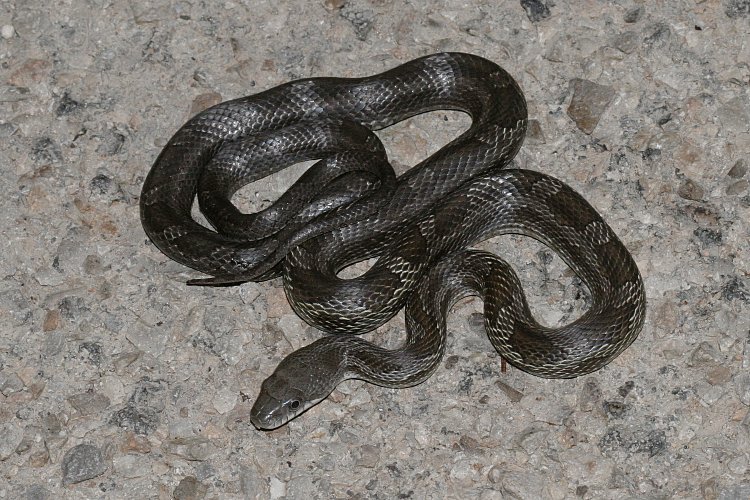
A young Black Rat Snake found on the road at dusk.
It looked like it could use a meal or two.
And with that, I have pretty well summarized my spring, herpwise...











































































